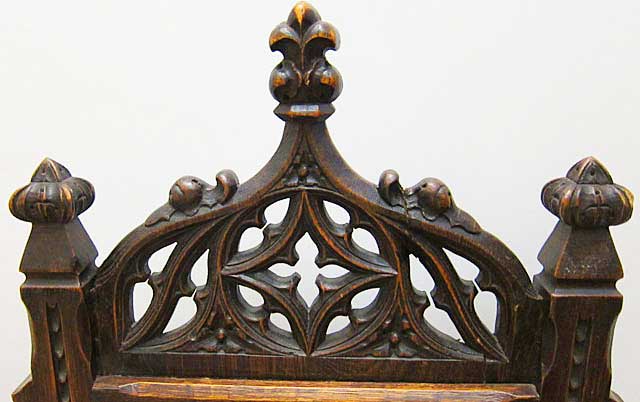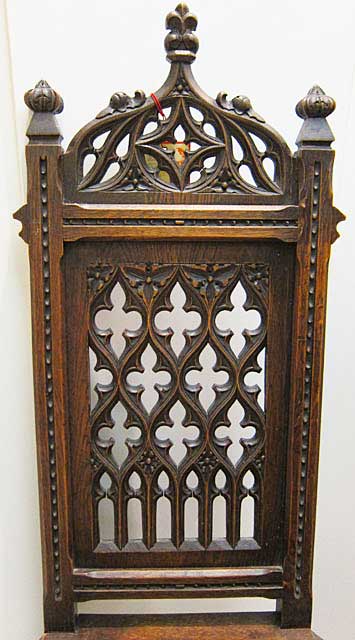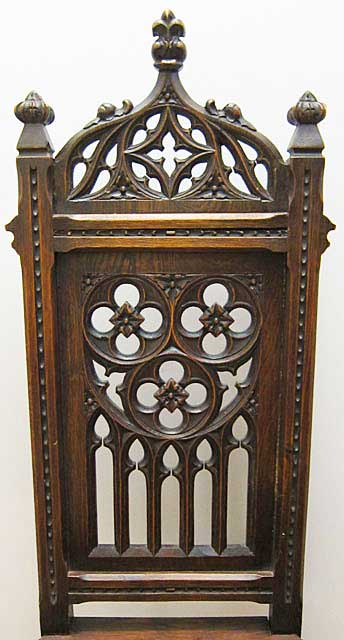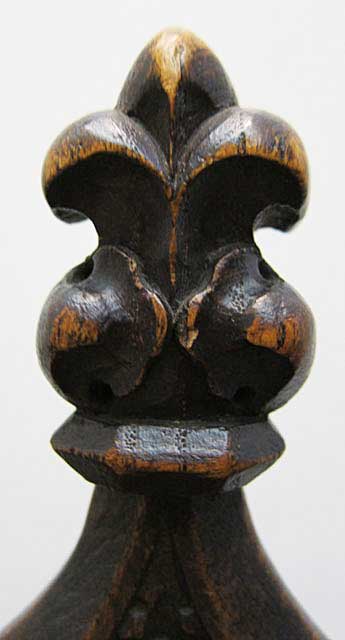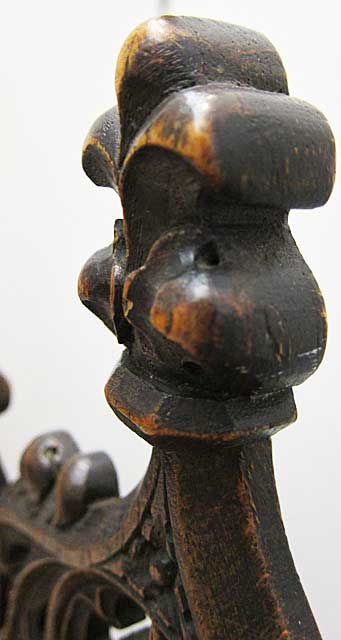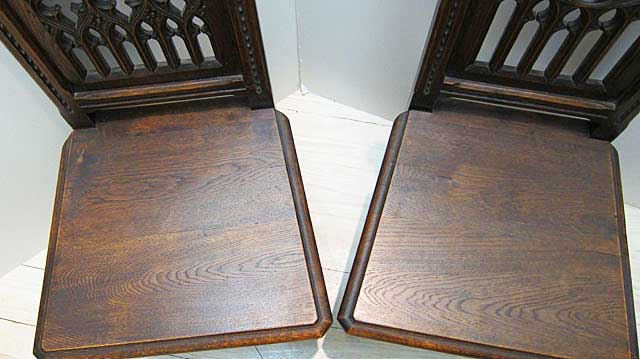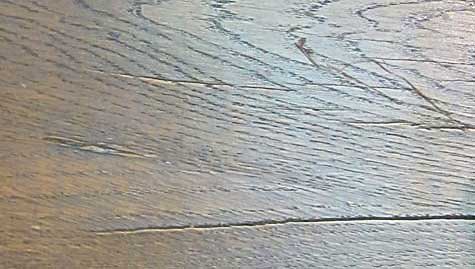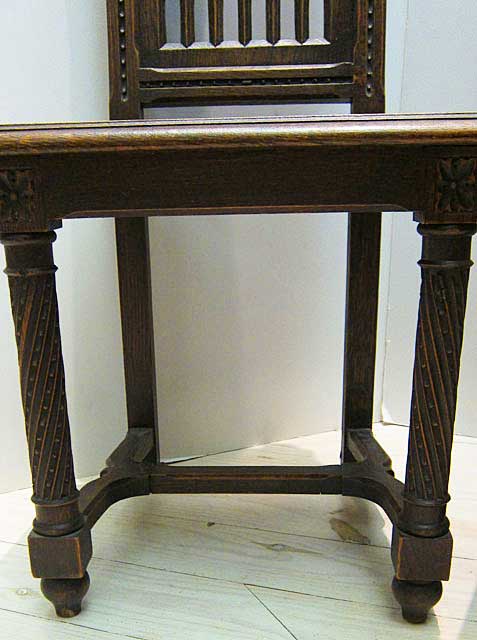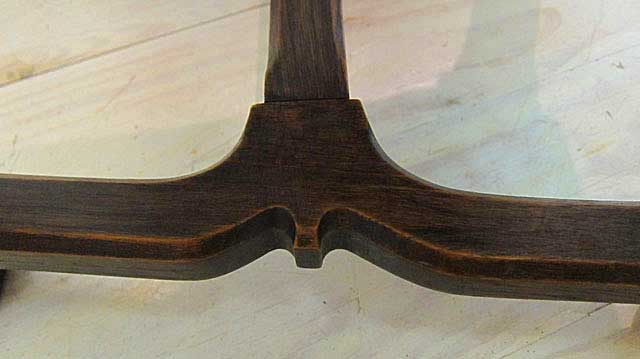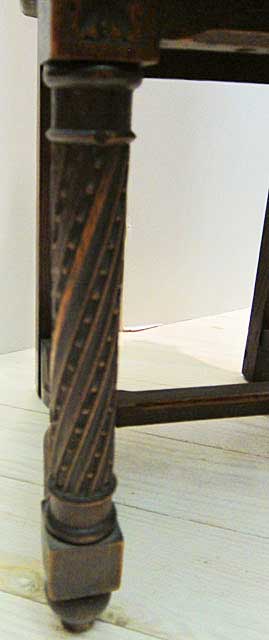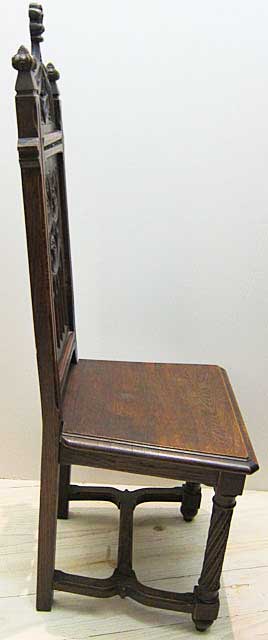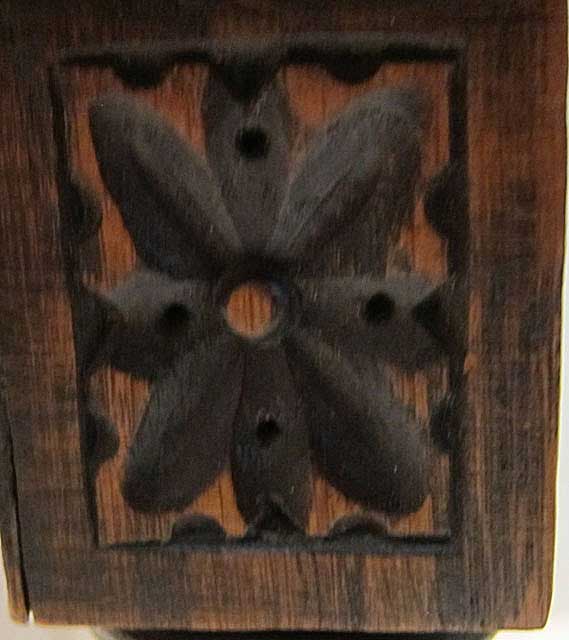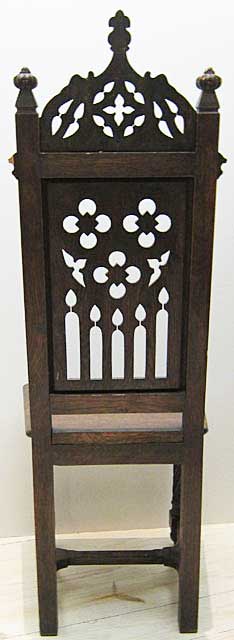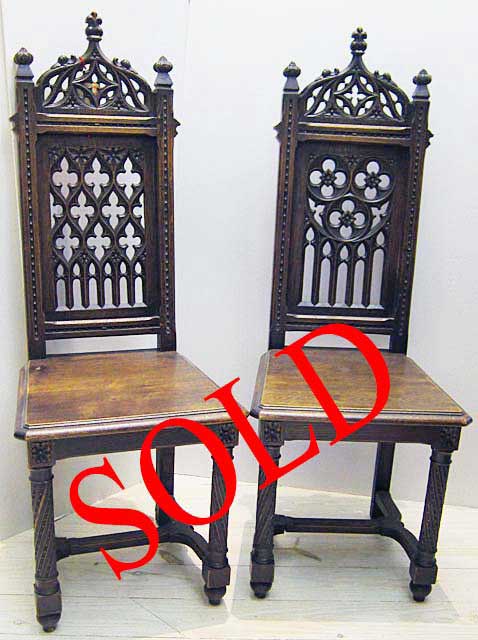
These two dining chairs are similar to two offered as item 4180 but are made of oak rather than walnut.
Compared to chairs 4180, the tops of these chairs have a taller panel of open tracery or fenestrage contained within the shape of an ogee arch (a gracefully curved arch used in late Gothic design). Typical elements of tracery populate this panel from the outward edges inward and within the central circle, including elliptical shapes called mouchettes. The main figure within the central circle is a quatrefoil whose four lobes have been extended outward to points.
We especially like the unique crocketing on the outer side of the arch at the top of each chair. Typically seen on the sides of Gothic spires as ornamentation, crockets are stylized, curled acanthus leaves. In this case they extend outward on each side of the main curl and are beautifully carved.
As with chairs 4180, the ogee arch curves upward and is crowned by a central finial in the shape of a three-dimensional fleur-de-lys. Finials that are more squat in shape and with crosses incised into their fronts are on each side of the arch, acting as termination points for the verticals that form the frame for the central panel of the chair. Unlike chairs 4180, these verticals are ornamented with a carved pattern of notches which is also used on the horizontal elements forming the panel's top and bottom.
The main back panel for each chair is a unique design of open tracery above an array of tall and slender lancet arches. The chair on the right is the more typical of Gothic dining chairs, with its focus on three quatrefoils carved within a rounded, upside down arch. In design of the chair on the left, quatrefoils are again the theme but in a shape where the upper and lower lobes are extended to points instead of being semicircles (as are the lobes on the left and right).
The base part of each chair, below the seat, incorporates figures seen in the design of the top. For example, the rows of notches ornamenting the elements of the frame become diagonal ornamentation carved into the legs, reminding us of pillars in Gothic cathedrals. The rosettes used to fill spaces at the center of quatrefoils (in the chair on the right) and in between lancet arches (in the chair on the left) ornament the corner blocks at the front of both chairs, just below the seat.
As shown in the detailed photo below, the chair on the right has a crack in the seat (approximately one-sixteenth of an inch at its widest point). However, it does not affect the chair's sturdiness or its ability to bear the weight of a diner.
The most representative color, given the challenges of photographing dark furniture, is in the image at the top of this page.
Reference
Ader-Tajan, Collection Bruno Perrier Haute Epoque (Catalog for Sale at Auction on April 6, 1992 at the Hôtel Drouot, Paris); Boccador, Jacqueline, Le Mobilier Français du Moyen Age à la Renaissance (Editions d'Art Monelle Hayot, Saint-Just-en-Chaussée, 1988); Thirion, Jacques, Le Mobilier du Moyen Age et de la Renaissance en France (Editions Faton, Dijon, 1998); Viollet-le-Duc, Eugène, Le Mobilier Médiéval (Georges Bernage, editor) (Editions Heimdal, 2003).
Uses
These chairs are ideal for surrounding an oak Gothic style dining table such as item 5115 and could be combined with a Gothic armchair (such as item 5224).
